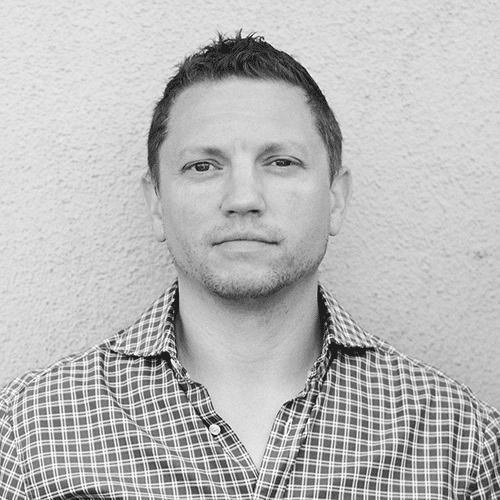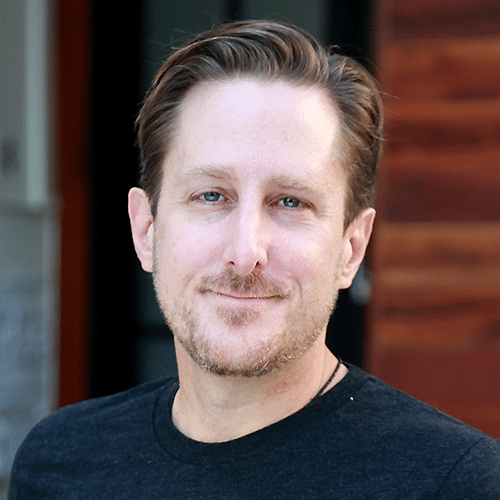
Andrew Luong has deconstructed the often lengthy and confusing process of small scale real estate investment, making it accessible to everyone. He and his partner, Justin, created Doorvest as a turnkey service built entirely online. They help their clients find a property, borrow the funds to renovate it and then sell the finished package to them. Keeping it as simple as possible, they have flat fees and even provide a rent guarantee for the first year. Their track record has allowed them to purchase and renovate properties in poor condition, or in neighborhoods that bankers might not normally like, thus opening the door for new real estate investors who might not have the wherewithal to take those first steps on their own.
Although Andrew began by working in the start-up world, his “squarely middle-class” upbringing led him to decide early on that real estate would be his path to financial security. In his early 20s he started buying and fixing up single-family homes in his spare time. Over just a few years his portfolio grew into the double digits, and he became not just a real estate investor, but a realtor and mortgage loan officer as well.
Over time it dawned on Andrew that the long laundry list of items that comes with purchasing a property, and keeps many people from considering investing in and managing a real estate portfolio, could be rebuilt into an almost frictionless service … bringing real estate investing to everyone. This is what ‘proptech’ is about, and Andrew’s bet is that within a few years most aspects of real estate will be transacted entirely online.
Insights and Inspirations
- The bigger mission is to democratize access to financial security for all.
- Andrew mainly sees two kinds of investors through Doorvest, neither of whom has invested in real estate directly before – those recently out of school, gradually building up their savings; and those mid- to late-career, looking towards retirement.
- Doorvest serves as sort of training wheels for people to get their feet wet, get the exposure, learn about the processes along the way.
- Andrew thinks most online real estate services are still a bit v1.0. Doorvest is looking towards aggregating far more data and streamlining services, all to empower people to invest in many kinds of real estate “within a matter of clicks.”
Information and Links
- A quote Andrew lives by: “Your problems never go away, they just change.” It helps him put things into perspective, that no matter how much one “accomplishes,” that satisfaction can really only come from within.
- Andrew is a fan of “The 4-Hour Workweek,” by Tim Ferriss, which shaped much of his views about work and how to live an optimal life. (Disclaimer: He spends much more than four hours working per week 🙂 )
- He is a big proponent of the concept of “work-life integration.”
Read the podcast transcript here
Eve Picker: [00:00:09] Hi there, thanks for joining me on Rethink Real Estate. I’m on a mission to make real estate work for everyone. Real estate can help to solve climate change, can house people affordably, can create beautiful streetscapes, unify neighborhoods and enliven cities. So I’m on a journey to find the most creative thinkers and doers out there. I’m not the only one who wants to rethink real estate. You can learn more about me at EvePicker.com or you can find me at SmallChange.co, a real estate crowdfunding platform with impact real estate investment opportunities open for investment right now. And if you want to support this podcast, join me at Patreon.com/rethinkrealestate, where there are special opportunities for my friends and followers.
Eve: [00:01:16] Today, I’m talking with Andrew Luong, the CEO and co-founder of Doorvest. Andrew loves real estate. Growing up in a lower middle-class family, he decided early on that real estate would be his path to financial security. So he started buying and fixing up single family homes in his spare time. While he honed his skills as an entrepreneur in a variety of start-ups, his portfolio grew into the double digits. He had honed his skills as a real estate investor as well. It dawned on Andrew and his co-founder, Justin, that the long laundry list of items that comes with purchasing a property could be deconstructed and rebuilt into a frictionless process to bring real estate investing to everyone. And so Doorvest was launched to provide a turnkey real estate investment service online. You’ll want to listen in to learn more. If you’d like to join me in my quest to rethink real estate, there are two simple things you can do. Share this podcast or go to Patreon.com/rethinkrealestate to learn about special opportunities for my friends and followers and subscribe if you can.
Eve: [00:02:46] Hello, Andrew, thanks so much for joining me today.
Andrew Luong: [00:02:50] Excited to be here. Thanks for including me.
Eve: [00:02:52] Yeah, I’d heard about your brand new start-up, Doorvest, and I was interested in knowing a little bit more about what you’re doing, what you’re trying to provide.
Andrew: [00:03:03] Right. Our mission as a company is to make, is to democratize access to financial security for all. Kind of where we’re at today is we make real estate investing easy, affordable and accessible to anyone, anywhere, sort of entirely online.
Eve: [00:03:21] So that’s your elevator pitch, right? Right.
Andrew: [00:03:25] Right.
Eve: [00:03:26] But what is the main mode to make? Because there’s so many different ways to make real estate investing easy for people nowadays. What does that mean, Doorvest?
Andrew: [00:03:36] Yeah, I guess to dig into a layer further, we’re essentially a tech enabled turnkey provider. So effectively we begin with our customers. What we’ll sort of learn more about our customers, often everyday individuals that have never participated and owned real estate directly before. We’ll learn more about the individual, kind of what they had earmarked as a down payment. So, what sort of returns or cap rates were they hoping for to what’s their general risk profile? And then with that, we’ll ask for deposits upfront. At that point, we’ll sort of get into what we call production. So, we’ll, based on customer objectives, we’ll then go out into the market. Identify, underwrite and acquire usually distressed, uninhabitable homes. We’ll purchase it. We’ll renovate it and we’ll lease it out. So, the home has sort of completed an income generating from day one. At which point we’ll kind of walk the customer through the mortgage and sort of the third-party transaction process. As the customer closes and takes title, we’ll take on operating. So, we’ll manage the homes for them once they close and take title. Where we position ourselves is that hopefully we will get our customers into again, oftentimes their first rental, hopefully if we perform. So they’re generating the returns that they expected and they like working with our team, hopefully that they come back as they sort of build out their nest egg and portfolio.
Eve: [00:05:09] So let’s back up a little bit. So, what you’re doing is actually helping people buy a piece of property that is going to be income producing for them. And you’re sort of getting rid of all the stress and anxiety of finding the property, renovating it, finding the mortgage. You kind of package all of that up front and turn over to them a fully renovated income producing property, is that correct?
Andrew: [00:05:38] Right. I didn’t think I could have said it better myself, but that’s absolutely correct. The goal is to make it really easy for them because oftentimes our customers are really busy people that have never done real estate before. So that’s sort of the three constraints that our customers see. And I think where we fit in nicely is being busy, being an experienced and oftentimes not having a lot of capital to begin with are kind of the three major points that I think we touch on.
Eve: [00:06:10] Oh, interesting. So, you’re taking the fix and flip out of fix and flip through them.
Andrew: [00:06:15] Right. And giving them the ability to kind of have and lean on a company that has some scale efficiencies. So generally, our appliances are cheaper, our flooring is cheaper, et cetera.
Eve: [00:06:29] Interesting. So what prompted you to launch this?
Andrew: [00:06:33] Right. I’d say it’s sort of my story and or the Doorvest story goes back roughly maybe seven or so years ago. At the time, I was in school studying chemistry and trying to be a doctor. Certainly, you could say that that didn’t work out. But I think I was fortunate and found my way to my first job at a start-up company, ultimately ended up doing okay. And I think I walked away with sort of two learnings. Number one sort of wanted to be spending my waking hours building companies from the ground up, but I really enjoyed the thrill of it, felt like I was okay at it. But secondly, I grew up squarely middle class and grateful that we never had to worry about where sort of dinner was coming from, for instance. But we were certainly by no means financially secure, so experienced firsthand financial security or maybe the lack thereof and its ability to sort of inhibit one from pursuing their dreams. Maybe for my parents, it was the dreams of having a happy family because you’re arguing over sort of the vacation plans. Maybe for others it’s to do something entrepreneurial or work at a non-profit or launch a podcast, what have you. And so, kind of found that that looked for an avenue to kind of generate some income security, build a long-term nest egg for myself. That’s where the two worlds collided. Found my way to real estate investing. Kind of did okay for myself. Built up a small double-digit portfolio for myself sort of nights and weekends while my day was sort of busy working person. And then along the way, through lots of organic conversations, coffees, dinners, what have you, saw others similar to me. And maybe these are folks that traded some stocks on Robinhood and maybe they had a 401k and brokerage account, high yield savings account, et cetera. And we’re thinking about sort of the next progression in assets. Real estate, it’s kind of natural there. But I think and you’ve been in the space arguably a lot longer than I have, but due to sort of the friction filled process along with sort of the capital barrier to entry, weren’t able to participate in sort of America’s number one source of wealth generation. One of those folks along the way was my good friend and now good friend and co-founder, Justin. But as we kind of went through the process together, it kind of dawned upon us that hopefully if we can build a sort of modern, easy way for anyone anywhere to buy and own income generating real estate entirely online, hopefully we could sort of bring this to the masses.
Eve: [00:09:20] Well, you know, you just said something really interesting and that was, you know, access to capital for people who normally can’t access capital. I mean, how does that work? How do you get them access to capital?
Andrew: [00:09:34] A part of it is investing in sort of affordable markets, encouraging our customers and giving them the resources and tools to be able to save and then sort of leveraging that into a market that’s affordable for them. That’s kind of one. I think the second component to that is sort of guiding them through and coaching them through sort of the mortgage financing process. That, in and of itself, is a pretty convoluted process. We hope, longer term to be able to impact sort of the financing process more more directly. But as of right now, we kind of see ourselves as a coach in that aspect.
Eve: [00:10:14] Do you go out and borrow money for the renovations or is that up to your customers at the moment?
Andrew: [00:10:19] We do it. So, we borrow debt as we acquire and manage the renovation.
Eve: [00:10:26] Does that make it easier for them because they are then borrowing or acquiring debt on an already renovated property that a bank can lay eyes on.
Andrew: [00:10:36] Exactly. So that’s one of the ancillary sort of value propositions for us is…
Eve: [00:10:43] That’s huge.
Andrew: [00:10:45] Right? Yeah. So, we’re doing pretty extensive reno. Like for context, we’re doing about 30 percent of the acquisition price as renovations to that number works itself out to roughly 40 or so thousand customers able to roll this into their conventional mortgage. And like you said, the banker is able to sort of have this finished product.
Eve: [00:11:07] Yeah, but I think what I mean by that’s huge is now, you are putting buildings back into circulation that most banks would not probably lend money on, especially not to a first-time fix and flipper. And so that really does expand opportunities for people in a pretty significant way.
Andrew: [00:11:31] Right.
Eve: [00:11:32] Oh, yeah, I was just putting it together because, you know, when we started, I wasn’t quite sure where the impact lies, but I can see the impact really lies here in the ability to help people build wealth. Because, you know, I’ve done this myself. I’ve gone to a bank with a property in a pretty rundown neighborhood and talked about my visions for the property and the bank, scratching their head, saying we definitely don’t want to lend money on this. And then I come back and show them the renovated property and they say, oh, now we get it. So, you are bridging that gap for people.
Andrew: [00:12:12] Right, and I think sort of the second letter to that is sort of the operational component to, again, sort of our target sort of customer and that we serve our folks that are busy, oftentimes with a demanding sort of day job and our folks that sort of haven’t done much real estate investing directly. So, we kind of serve as sort of training wheels for them to get their feet wet, get the exposure, learn about the processes along the way. And then the second component is that we do the heavy lifting for them to kind of have that finished product.
Eve: [00:12:51] So where are you doing this?
Andrew: [00:12:53] Right, we’re focused on Texas as of right now, it’s sort of an operating market.
Eve: [00:13:00] And how many times have you done this for customers so far? If you’ve been… you launched when, in the middle of the pandemic?
Andrew: [00:13:09] I’d say more or less we were born out of Covid. So, I’d say Justin and I were sort of working out our best early last year kind of got started, maybe March or so. So that’s squarely at the beginning of the pandemic. And yeah, we’re at sort of low, sorry, mid double digits, sort of homes transacted. I don’t have the numbers top of mind, but we’ve been growing steadily. It seems like customers, kind of what we have to offer has been compelling to customers. It’s whether, the question then lies, how do we do this at sort of greater scale, serve more customers?
Eve: [00:13:52] Right. Right. Do you have repeat customers yet?
Andrew: [00:13:55] We’re soon to. Actually, we have a couple early ones, and we actually have a handful of them that are expected to buy their second home through us this month. So that’s sort of validation of our model and we’re really excited to have that and see that.
Eve: [00:14:14] That is exciting. So what do you, what do your customers generally look like? Are there any anomalies or is it pretty squarely one group of people?
Andrew: [00:14:25] Right. So as of right now, there’s two core groups of Doorvest customers. So, number one is busy working person, maybe call it five years or so out of college. They’ve been gradually building up their savings and are kind of thinking about real estate for the first time ever in their lives. That’s sort of one group. The second bucket is, I would call them mid to late career. So again, busy working person. Maybe they own their primary. Maybe they’ve got a couple of primaries over the course of their career or looking forward towards retirement and thinking about income streams and nest egg and what have you. They’ve never invested in real estate directly ever. They’ve always been sort of intrigued by the idea, but never had a vehicle or the time to do it themselves. And so Doorvest’s kind of serves as a retirement vehicle for them.
Eve: [00:15:26] Interesting and do you have a second market in mind already or you’ve got plenty to do in Texas?
Andrew: [00:15:34] We have plenty to do, but we are eying a number of other markets. I think market number two, whenever that, it’s a matter of time, don’t have sort of a concrete timeline. But at some point, we will expand into our next market. I think the way that we’re thinking through that, number one leads with customer demand. So, what are our customers asking of us? And what would sort of the early hypothesis being? It’ll be either a market similar to where we’re at in Texas or maybe a more yield focused market. Call it a Memphis, Tennessee or so, or maybe a sort of growth market, call it a Phoenix or so. Yet to be determined. Hopefully in the coming decades we end up in all of those markets and hopefully more. But we have plenty to do at this point.
Eve: [00:16:28] Yeah. So, you’re building a technology around all of this, right?
Andrew: [00:16:33] Right.
Eve: [00:16:34] And what does that look like? What do you have to build? What have you built so far?
Andrew: [00:16:38] Right. I think we have a long way to go. I think kind of where we’ve gone so far as customers are able to buy homes entirely online, leveraging the data sources that are either proprietary to us or data sources that we as an organization are able to access. Along with lots of sort of ways to analyze the home online, whether it be integrating Google Maps Street View, so they’re able to to do a brief walk around the neighborhood or whether it be having Mattermark reports, so they’re able to walk through the house. Whether it be crime or school data, et cetera. I see our work as sort of aggregating various data sources. I think that the first generation of sort of real estate companies, such as the Zillows and the Redfins of the world, brought a lot of real estate online. I think I see it as our sort of job is to organize that data, sort of make sense from it in a digestible, sort of actionable way. To kind of where we’re at. Today’s customers are able to buy a home entirely online. It takes many, many clicks, many emails, and many phone calls over time. Our sort of aspiration as a company is how do we get it to the point where an individual can be anywhere earning any amount of money and able to participate in America’s number one source of wealth within a matter of clicks. I think we have a long way to go, but excited about sort of the progress we’ve made so far.
Eve: [00:18:17] Yeah. So, I have to ask you, how many of your customers have gotten off the sofa and actually gone to look at the property they’re going to buy?
Andrew: [00:18:25] Right. Low single digits. Yeah. So, we’ve added a number…
Eve: [00:18:31] About 60, 50 percent, 40?
Andrew: [00:18:34] Sorry, sorry. I think it’s about five percent or so. So, the number is pretty low. The majority of the folks that we’ve served have sort of leaned on us, given sort of our business model and where we positioned ourselves to kind of do the heavy lifting for them.
Eve: [00:18:53] Interesting. So, then you’re also operating as a property manager and…
Andrew: [00:18:59] Right.
Eve: [00:18:59] So what does your team look like?
Andrew: [00:19:02] Right. So, I guess in terms of the entire team as of today, where we’re 17 folks, small but mighty, I think, and sort of gradually growing. Spread across sort of the many different facets of the business. About a third of our team is on what we call success, which is sort of property management, traditional property management. I think with the twist, yes.
Eve: [00:19:30] The traditional property management can be labor intensive and frustrating.
Andrew: [00:19:36] Right, right.
Eve: [00:19:37] Yeah. Yeah. So how do you hope to scale? Have you, must have thought about that as a start-up.
Andrew: [00:19:45] Oh yeah. Lots, lots of thoughts about that I think sort of beginning with our mission, but really to democratize access to financial security for all. As of right now, we’ve made it accessible to anyone, anywhere with roughly thirty thousand as a down-payment is able to participate in real estate directly, entirely online. I’m proud of that. But I think that still means that we have a long way to go to sort of make real estate accessible to anyone, which means sort of driving sort of the capital barrier to entry down. I think over time, our aspiration is to make it so anyone can participate in real estate with call it 30 thousand, maybe 20, maybe 10, maybe five, maybe 500, maybe 100. Again, I think we have a long way to go to get there.
Eve: [00:20:37] Oh, interesting. Yeah, yeah, yeah. So wow, that’s quite an enterprise, Andrew.
Andrew: [00:20:46] It’s a lot of work. And I’m fortunate that our team is really sort of thrilled and excited and cares deeply about sort of what what we’re hoping to build for the world. Again, I certainly see that we have a long road ahead, but I’m confident if we’re able to succeed, I hope we can impact the lives of many, many people for the better.
Eve: [00:21:10] Because it’s really three businesses in one. I mean, the property management business, you can have a fix and flip business, or you can have a technology start-up. Right?
Andrew: [00:21:19] Right. That it’s funny that you say that you mentioned the three businesses and one, this is something that I talk about with internal and external, whether it be our investors or our future investors or partners, et cetera. But effectively, we’re gluing three businesses into one and three very complex businesses. I think if we succeed, we offer our end users sort of the, a really nicely packaged, really nicely packaged experience.
Eve: [00:21:51] I could see you adding in the fourth, and that’s real estate brokerage. Your missing…
Andrew: [00:21:57] That. That’s right. We’ll get there, I think.
Eve: [00:22:00] You will. I’m pretty sure you will. So so what’s the biggest challenge you’ve had?
Andrew: [00:22:08] Right. I think it evolves. I remember I was talking to Justin a little bit back, and I was like Justin, it feels like things we’re encountering more challenges than ever before. Is this because we’re not good at kind of what we’re doing? And somehow ,we’re facing more challenges. And as we’re talking, I think it kind of surfaced that as a small business that’s trying to be a bigger and bigger, more impactful business, the way that we get there is by unlocking ourselves a new set of challenges. That’s a long-winded way of me saying I think the challenges evolve. If you ask me four weeks ago, maybe I would have said the ability for us to consistently raise the real estate debt to be able to fund these transactions. Thankfully, I think we’re kind of past that now. As of right now, I think I mean, this might be outside of our control to a certain degree, but sort of the macro, as we’re seeing in the real estate industry. So, lots of competition, which makes inventory really tough, lots of delays, supply chain delays. So it feels like every step along the way is adding two or three days, which amounts to really long delayed timelines for our customers, etc.
Eve: [00:23:31] We’re experiencing that ourselves. Supply chain delays seem to have gotten worse in the last, I think, in this year than they were last year somehow.
Andrew: [00:23:40] Right. I’d love to see some numbers behind it, but this is certainly what we’re feeling internally, too.
Eve: [00:23:45] Yeah, it’s almost like people are trying to build their businesses back up and they’ve got to start from scratch. They’ve got to be reborn. We can’t get contractors to perform, yet, but that will go away, surely.
Andrew: [00:24:00] That’s a hope. Yeah. And I want to be sort of intentional and careful about us sort of having this hope and hopefully it’s validated. It sounds like I mean, based on conversations like our conversation right now and others that I’ve had, it sounds like this is a matter of time, in which case I feel good about that. But everything from appraisal delays to appliances taking a week longer to flooring taking a little bit longer, etc. Like that kind of adds up for our business.
Eve: [00:24:31] What part of the business do you love most of?
Andrew: [00:24:36] There’s many areas. Honestly, I’d say number one is, so I came from sort of the sales and business development background. What that means for us is sort of working with our customers who are oftentimes folks that have never sort of participated in real estate, nor did they think that they were able to right now. So, seeing and hearing their stories, whether it be, hey, my wife and I have been thinking about how we’re going to supplement our retirement and our 401K based on our number crunching just isn’t enough. And we hope that if over the course of the next 10 or so years, if we buy a handful of rentals and kind of get that paid off through Doorvest. Like, we have this sort of extra layer to our income streams, et cetera, and you all make it so easy for us to do this while we could still focus on our busy lives, which is our jobs. We both have jobs and our children who we care deeply about. Like hearing those stories and spending time with sort of our customers, it never gets old. I, believe as we go from mid double-digit customers to hopefully triple and quadruple etc. customers, I believe this will stick with me. So that gets me really excited.
Eve: [00:26:01] So what’s your very big, hairy, audacious goal?
Andrew: [00:26:07] Right. Our hope is to impact the lives of, I mean, every American, given the fact that we’re interfacing with busy working people, we’re interfacing with our residents, et cetera. I think sort of in the nature of the space that we’re in, we impact and touch a lot of lives, even beyond sort of these direct folks that we’re working with day to day. We’re impacting the lives of our general contractors and our vendors and our partners, et cetera. The big audacious goal, I think, is to sort of be cognizant of the position that we’re in and driving sort of win-win solutions across the board.
Eve: [00:26:53] Well, this sounds some really amazingly exciting, and I can’t wait to see where you are in five years from now. You’re very young. You just starting out. It seems like you’ve made big strides already. So, congratulations. And I look forward to hearing more.
Andrew: [00:27:09] Thank you. Yeah, I appreciate it. Sometimes it feels like we’re just getting started. And I certainly think that’s the case. I think if we kind of all align ourselves about what we care the most about in this world, I hope and I think we can do sort of amazing things for the world. So, hoping to stay in touch as we rebuild away.
Eve: [00:27:36] That was Andrew Luong of Doorvest. Andrew and his partner, Justin, have deconstructed the often lengthy and confusing process of small-scale real estate investment, making it accessible to everyone. Their turnkey service is built entirely online. They try to keep it as simple as possible with flat fees and even providing a rent guarantee for that first year. They help their clients find a property, borrow the funds to renovate it and sell the finished package to them. Their track record allows them to purchase and renovate properties in poor condition or in neighborhoods that bankers might not like. Opening the door for retail investors who might not have the wherewithal on their own. We’ll be watching Doorvest as it grows.
Eve: [00:28:38] You can find out more about this episode on the Show Notes page at EvePicker.com or you can find other episodes you might have missed, or you can show your support at Patreon.com/rethinkrealestate, where you can learn about special opportunities for my friends and followers. A special thanks to David Allardice for his excellent editing of this podcast and original music. And thanks to you for spending your time with me today. We’ll talk again soon. But for now, this is Eve Picker signing off to go make some change.
Image courtesy of Andrew Luong/Doorvest




